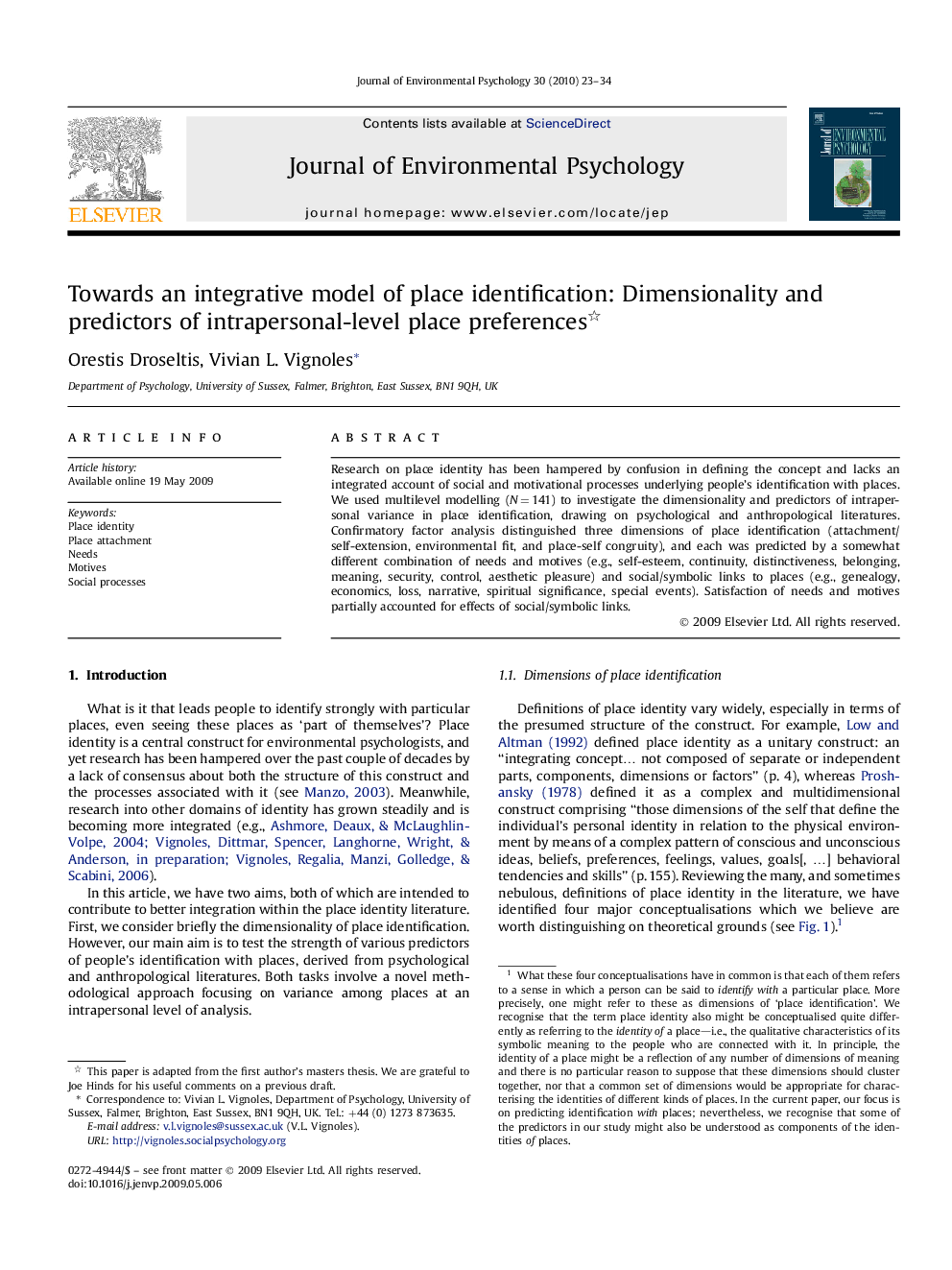| Article ID | Journal | Published Year | Pages | File Type |
|---|---|---|---|---|
| 885764 | Journal of Environmental Psychology | 2010 | 12 Pages |
Research on place identity has been hampered by confusion in defining the concept and lacks an integrated account of social and motivational processes underlying people's identification with places. We used multilevel modelling (N = 141) to investigate the dimensionality and predictors of intrapersonal variance in place identification, drawing on psychological and anthropological literatures. Confirmatory factor analysis distinguished three dimensions of place identification (attachment/self-extension, environmental fit, and place-self congruity), and each was predicted by a somewhat different combination of needs and motives (e.g., self-esteem, continuity, distinctiveness, belonging, meaning, security, control, aesthetic pleasure) and social/symbolic links to places (e.g., genealogy, economics, loss, narrative, spiritual significance, special events). Satisfaction of needs and motives partially accounted for effects of social/symbolic links.
